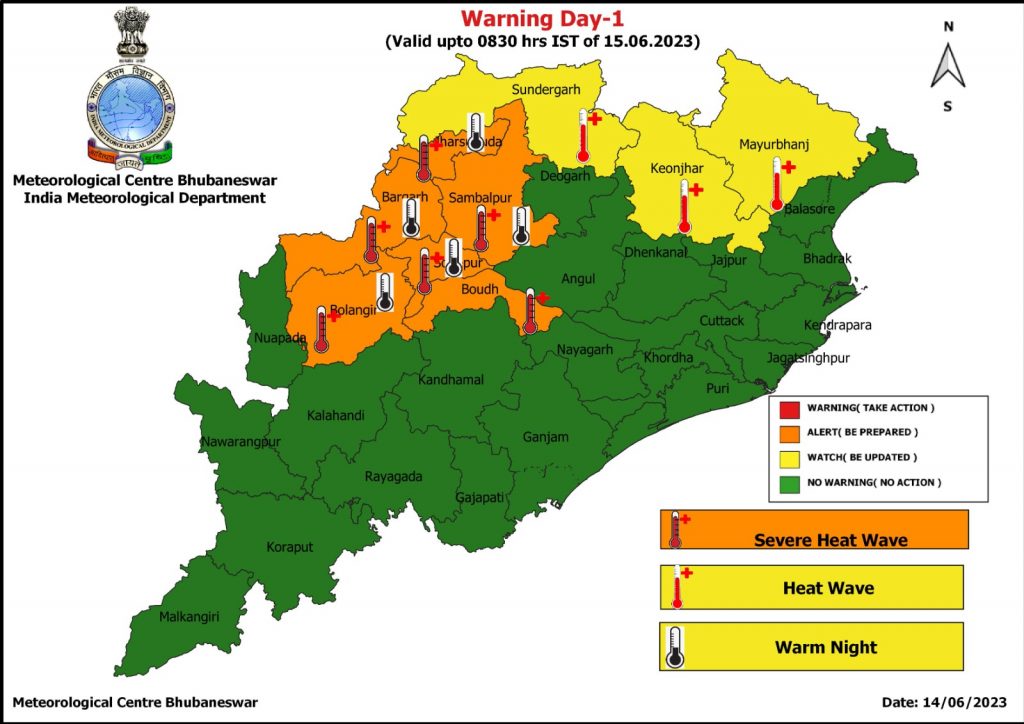Bhubaneswar: In a relief from the sweltering heat, the day temperature dropped at several places in Odisha with Jharsuguda recording the highest of 39.4 degree Celsius followed by Sambalpur (38.2) and Hirakud (37.2) by 11.30 am on Wednesday.
Bhubaneswar logged 33.2 degree Celsius.
According to the India Meteorological Department (IMD), one or two places in Sambalpur and Jharsuguda experienced heatwave during the last 24 hours. The night temperature at Sambalpur was 31.6 degree Celsius, 6.4 degrees above normal. Similarly, the minimum temperature in Titlagarh and Hirakud shot up by 6.2 degrees and 5 degrees respectively.
The minimum temperature at Sambalpur on Monday was 29.2 degree C. The night temperature in the western Odisha town had not crossed 24 degree C in the last 11 years, while it saw the hottest June in 1998 when mercury soared to 47.4 degree Celsius, according IMD’s statistics.
Also Read: Amid Soaring Temperature, Sambalpur Gears Up For Possible Heat Stroke
On Tuesday, Sambalpur was the hottest place in the state at 44.3 degree Celsius, which was 6.3 degrees more than normal temperature. Eight other places reeled under 42 degree Celsius or more on the day. Bhubaneswar, which recorded 44.3 degree Celsius, the highest in 11 years, on Monday, heaved a sigh of relief as mercury plummeted to 34.2 degree Celsius after overnight rain. Cuttack recorded 35.8 degree on the day.
It is the soaring night temperature with day time mercury that is making life miserable for people of the state.
According to a forecast, the mercury is likely to soar to 43 degree Celsius in Sambalpur, Jharsuguda and Balangir on Wednesday. The twin cities of Bhubaneswar and Cuttack are likely to record 36 and 37 degree Celsius respectively.
Check Heatwave Warning For Today

The MeT office further said that conditions are becoming favourable for further advance of Southwest Monsoon over some more parts of south Peninsular and East India and adjoining areas during June 18-21.
Addressing a press conference, IMD chief Mrutyunjay Mohapatra said the cyclone Biparjoy helped the monsoon advance over southern parts of the peninsula by increasing the cross-equatorial flow over the Arabian Sea.


